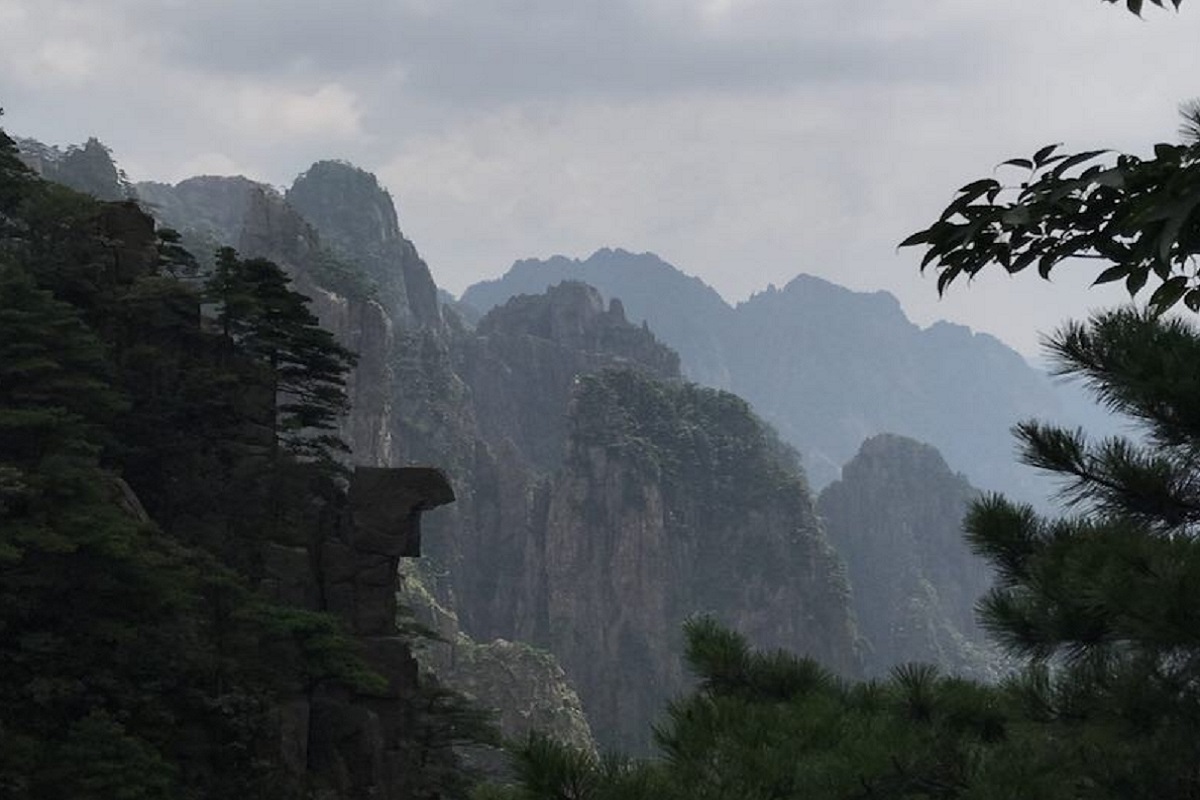
The first time I heard about Yellow Mountain (“Huangshan”) was when my dad showed me an old black-and-white photo in which he, a then-7-year-old boy, stood in front of a gray mountain and grinned widely. He pointed at the mountain in the background, which was more like a blurry outline in the dusk, telling me it was the most beautiful mountain in China and was located right in the south of his hometown.
Born in the U.S. and speaking English more fluently than Chinese, I could not understand everything he described about the mountain, but I saw the sparks in his eyes and sensed the joy in his voice. I was curious what kind of mountain could be so deeply etched in his memory and make him smile like a child.
Last summer, I attended a two-week summer camp traveling to China. One activity on our schedule to visit Yellow Mountain. As I saw the jagged mountain looming up in the horizon from the bus window, the image of blurry outline in my dad’s photo ran through my head, filling me with a sense of excitement.
We first took a cable car that slowly elevated to a highland of approximately 1,600-meter altitude, where we entered a gate entrance of White Goose Ridge (“Bai’e Ling”) and started ascending the steps leading to one of the peaks for a mountain view.
We raced up a stone-step trail that wound up the mountain, burning the energy that would usually be spent on Fortnite or other video games. The slope was gentle at first, but as the mountain became steeper, the trail pitched up and our strides turned slower and more laborious. As we tromped up the steps that seemed endless, our breath became gulps and our faces sweaty and ruddy. Then I remembered my dad told me that one had to reach a peak to get the best view of the mountain, so I gathered my strength and continued the journey.
The moment we reached Shixin Peak (“Shixin Feng”), one of the many peaks of Yellow Mountain, I realize what my dad meant by the best view of the mountain. The distant mountain peaks in varied shades of smoky blue overlapped and jutted into the solemn sky, appearing and vanishing in the haze that hovered and swirled around them. Dark basalt cliffs were gently brushed by clouds suspended in an ethereal way. The mountain was pristine and mysterious, so different than the grassy rolling foothills that I used to see.
In the crevices of cliffs, there were pine trees in different odd shapes, such as dragons, flutes, and tough yoga poses. The soil on the mountain was extremely barren and rocky, so those trees had to use all the possible resources to survive. Their leaves were as sharp and hard like needles, roots long and tangled to absorb every drop of dew, branches crooked and twisted to search for light. In contrast to the well-manicured grass and the neatly-trimmed trees along city streets, those pine trees hanging on the cliffs were wild lives sculptured by wind, rain and gravity and toughened by years of weathering and erosion.
In front of my eyes was a vast canvas, where nature revealed a painting of beauty and grace, strength and tenacity. I took a deep breath of the fresh mountain air, immersed in the serene and unruffled surroundings.
At that moment, the fading photo that my dad had showed me flashed with vivid colors in my mind.
Dear Reader: This page may contain affiliate links which may earn a commission if you click through and make a purchase. Our independent journalism is not influenced by any advertiser or commercial initiative unless it is clearly marked as sponsored content. As travel products change, please be sure to reconfirm all details and stay up to date with current events to ensure a safe and successful trip.
As per my opinion Mountains are the real beauty of any country but not only a particular country is the the natural beauty of World….. It gives feeling like we are in heaven.